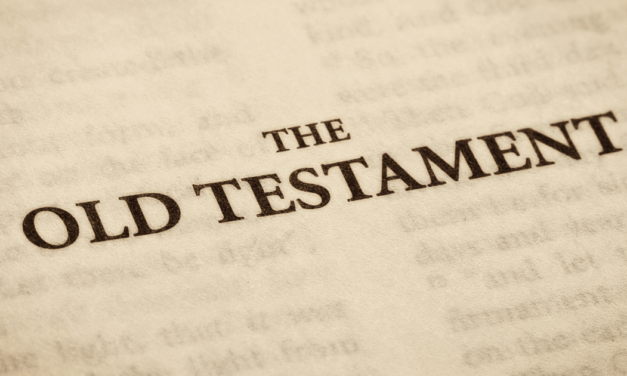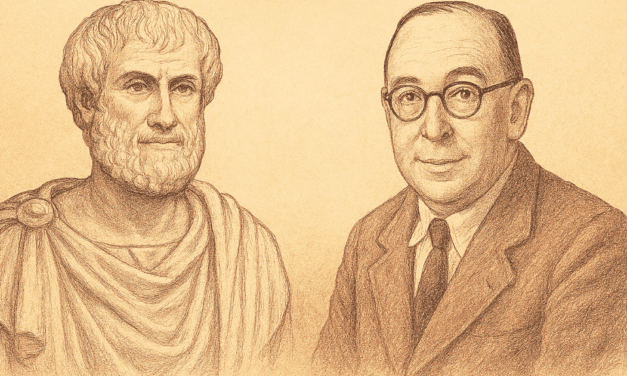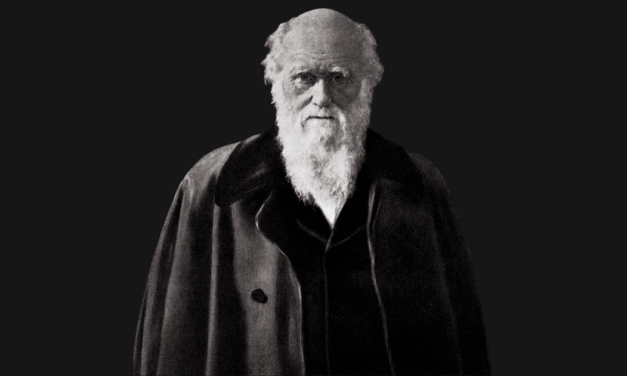This article first appeared in the News Watch column of the Christian Research Journal, volume 27, number 1 (2004). For further information or to subscribe to the Christian Research Journal, click here.
DNA evidence is offering a serious challenge to the Mormon claim that Native Americans are descended from Hebrew colonizers who came to the Americas around the time Jerusalem fell to the Babylonians hundreds of years before Christ.
Mormonism’s founder, Joseph Smith, claimed that an angel named Moroni appeared to him when he was 17 and told him of golden plates buried in a stone box near his family’s home in Palmyra, New York. The angel also told Smith that the plates contained an “account of the former inhabitants of this continent, and the source from whence they sprang.” Smith retrieved the plates, and his translation of them was published in 1830 and titled the Book of Mormon.
The title page of the Book of Mormon states it is “an abridgment of the record of the people of Nephi, and also of the Lamanites — written to the Lamanites, who are a remnant of the house of Israel.” The main theme of the book revolves around the descendents of a prophet named Lehi, who was a descendent of the biblical Manasseh, according to Alma 10:3. Nephi and Laman, two of Lehi’s sons, play principal roles at the beginning of the book. Nephi is described as the righteous son of Lehi while Laman is described as wicked. As a result of his evil behavior, Laman and those who followed him were cursed with dark skin. Many Mormons believe Native Americans are the dark-skinned descendents of the Lamanites.
Several anthropologists, biologists, and geneticists have challenged this assumption, but probably none have gained more notoriety in recent months than Thomas Murphy, chairman of the Department of Anthropology at Edmonds Community College in Lynnwood, Washington. What makes his claims so intriguing is that he is a member of the Mormon Church.
Murphy insists that the Book of Mormon, touted by fellow members of the Church of Jesus Christ of Latter-day Saints (Mormons) as the “most correct book on earth,” is incorrect when it claims that Native Americans are of Jewish descent. In a 2002 essay titled “Lamanite Genesis, Genealogy, and Genetics,” he stated, “So far, DNA research lends no support to traditional Mormon beliefs about the origins of Native Americans.”
Murphy notes that “DNA research has substantiated the archaeological, cultural, linguistic, and biological evidence that also points overwhelmingly to an Asian origin for Native Americans.” Speaking at a Sunstone Symposium (an annual gathering of more liberal-minded Mormon scholars) in Salt Lake City in August 2002, Murphy asked, “Now what do we as Mormons do? We’ve got a problem. Our beliefs are not validated by the science.” Such a conclusion led to his being summoned by Mormon authorities to a disciplinary hearing. Due to a public outcry, however, his December 8, 2002, appointment with them was postponed indefinitely.
Murphy’s public remarks, nevertheless, have been met with strong criticism by high-ranking members of the LDS Church. Some have accused him of behaving like an “anti-Mormon,” while others have attempted to dismiss his scholarship as simply faulty. On January 29, 2003, a lecture was held at Brigham Young University (BYU) to discuss the DNA controversy. Michael Whiting, an evolutionary biologist and professor at BYU, offered his response to Murphy’s claims as well as to the comparison some have made between Murphy and Galileo. Whiting quipped, “It’s an inappropriate comparison. The difference is Galileo got the science right. I don’t think Murphy has.”
Several of Murphy’s earlier critics now concede that much of what he says is true. They, nonetheless, refuse to agree with Murphy’s conclusion that the evidence shows that both Joseph Smith and his work are incorrect.
Though Murphy has been the main recipient of criticism from the Mormon faithful, he is not alone in his conclusions. In his 2002 essay he cites Michael Crawford, a biological anthropologist at the University of Kansas. “I don’t think there is one iota of evidence that suggests a lost tribe from Israel made it all the way to the New World,” Crawford said. “It is a great story, slain by ugly fact.” Sharing similar conclusions is Oxford geneticist Bryan Sikes and Russian geneticist Miroslava Derenko. Murphy also notes that respected BYU geneticist Scott Woodward is among those who offer little hope of ever finding a link between indigenous Americans and Jews.
D. Jeffrey Meldrum and Trent D. Stephens, two Mormon biologists from Idaho State University, “accept the published data dealing with Native American origins and view those data as reasonably representing American-Asian connections.” In an article titled, “Who Are the Children of Lehi?” written for the Journal of Book of Mormon Studies, both men admit that “the data accumulated to date indicate that 99.6 percent of Native American genetic markers studied so far exhibit Siberian connections.” They add, “There has been little if any evidence seriously considered by the mainstream, scientific community that would indicate a Middle East origin, or any other source of origin, for the majority of contemporary Native Americans.”
In an essay titled “Does the DNA Evidence Refute the Book of Mormon?” Mormon scientist Jeff Lindsay wrote,
For the Book of Mormon, it now appears that a nineteenth-century assumption that many leaders and members of the Church made about the text is incorrect. Many people, not knowing anything about the early settling of this continent outside of the migrations reported in the Book of Mormon, assumed that all Native Americans descended only from the few small groups mentioned there. That assumption is wrong, to the best of our knowledge. It is not supported by the text or by scientific evidence (emphases in original).
Lindsay’s statement collides with a comment made by LDS general authority Spencer W. Kimball. In a July 1971 article titled, “Of Royal Blood,” published in the church-owned Ensign magazine, Kimball, who at the time was an apostle in the LDS Church, stated,
With pride I tell those who come to my office that a Lamanite is a descendant of one Lehi who left Jerusalem some 600 years before Christ and with his family crossed the mighty deep and landed in America. And Lehi and his family became the ancestors of all of the Indian and Mestizo tribes in North and South and Central America and in the islands of the sea, for in the middle of their history there were those who left America in ships of their making and went to the islands of the sea (emphasis in original).
Kimball later became the 12th president of the LDS Church.
Mormons such as Lindsay are not the only ones affirming that Latter-day Saints have been grossly misinterpreting the Book of Mormon on this issue. Murphy observes that organizations such as the Foundation for Ancient Research and Mormon Studies (FARMS), a scholarly Mormon apologetics group, are also “offering revisionist interpretations that seek to reconcile faith and science.” He states, “DNA research may make this effort more difficult as the views of intellectuals and those of traditional Mormons continue to diverge.”
In light of the current data, many Mormons are finding it difficult to accept the statement in the introduction of the Book of Mormon that Jewish Lamanites are the “principal ancestors of the American Indians.” Instead, LDS scholars and apologists are now insisting that the people mentioned in the Book of Mormon must have encountered other groups after their arrival in the Americas, and that through intermarriage, the DNA link eventually became undecipherable. This theory, known as “genetic drift,” assumes that the Lamanite colonizers always remained a relatively small group; however, Spencer Kimball noted in an April 1947 conference message that the Nephites and Lamanites once “numbered hundreds of millions of people on these two American continents.”
Murphy insists that a literal reading of the Book of Mormon does not support the notion that the Lamanite population remained small and relatively insignificant. While speaking at a Salt Lake City Sunstone Symposium in August 2003, he pointed out that “genetic extinction of Book of Mormon populations is not consistent with statements in the scripture that identify multitudes, many thousands, and millions of descendants.” He went on to say, “Prophets of the Book of Mormon foretell of the persistence of Lehi’s descendants to the present and beyond.”
In defense of his conclusion Murphy cited the 12th chapter of 1 Nephi in the Book of Mormon, which records a vision of an angel seen by Nephi, the son of Lehi. In verse 1 Nephi was told, “Look and behold thy seed, and also the seed of thy brethren. And I looked and beheld the land of promise; and I beheld multitudes of people, yea, even as it were in number as many as the sand of the sea.” Page 33 of the Book of Mormon Student Manual, which was published by the LDS Church in 1979, says, “‘Thy seed’ would be the Nephites, and ‘the seed of thy brethren’ would be the Lamanites.” In this vision Nephi saw “the people of the seed of my brethren that they had overcome my seed; and they went forth in multitudes upon the face of the land.” Mormons believe this prophecy was fulfilled around AD 421 at the battle of the hill Cumorah.
Murphy reminded his audience that the angel who spoke to Nephi promised that “God will not suffer that the Gentiles will utterly destroy the mixture of thy seed, which are among thy brethren. Neither will he suffer that the Gentiles shall destroy the seed of thy brethren” (1 Nephi 13:30–31). Past LDS leaders have been fully convinced that descendents of Lehi would remain plentiful and could be easily identified.
Current LDS president Gordon B. Hinckley has asserted that Lehi’s descendants can be identified. On more than one occasion, Hinckley has used his dedicatory prayers at various Mormon temples to validate what he feels is the truthfulness of the Book of Mormon.
In his March 6, 1999, dedicatory prayer given at the Colonia Juaréz Chihuahua Temple (in Northern Mexico), Hinckley invoked God to “bless Thy Saints that they may continue to live here without molestation. May they live in peace and security. May they be prospered as they cultivate their farms and pursue their vocations. May the sons and daughters of father Lehi grow in strength and in fulfillment of the ancient promises made concerning them.”
On August 7, 1999, the LDS Church News printed the dedicatory prayer given by President Hinckley at the dedication of the temple in Guayaquil, Ecuador. He again identified what he believes are Lehi’s literal descendents. “It has been a very interesting thing to see the descendants of father Lehi in the congregation that have gathered in the temple,” he said. “So very many of these people have the blood of Lehi in their veins, and it is just an intriguing thing to see their tremendous response and their tremendous interest.”
In the same issue of Church News that printed Hinckley’s Guayaquil temple prayer, a warning was issued regarding “so-called learned people who have let intellect undermine their spiritual moorings and who would also attempt to lead the faithful away from those who are appointed by the Lord to lead.” The article went on to say, “There are those who feel that our leaders are out of touch with the realities of the day. They would attempt to lead members by substituting their own knowledge for the revelation from God to His prophets.” These words of caution are unrelated to the DNA issue, but they may prove very confusing to the LDS member who would like to remain faithful to his or her ecclesiastical leadership yet sees a disparity between their interpretations of the Book of Mormon and those coming out of BYU.
The LDS Church could end the controversy by making an official statement regarding the lineage of the Lamanites; however, this seems unlikely. In an attempt to calm the concerns of its membership, the church has published several articles on the DNA issue on the official LDS Church Web site. The Web site is clear to point out, however, that the articles “are not official Church positions or statements.” Until the church decides either to defend or denounce comments from its leaders, members who try to be as intellectually consistent as possible in their faith will continue to face the dilemma of believing either science or “latter-day revelation.”
— Bill McKeever







